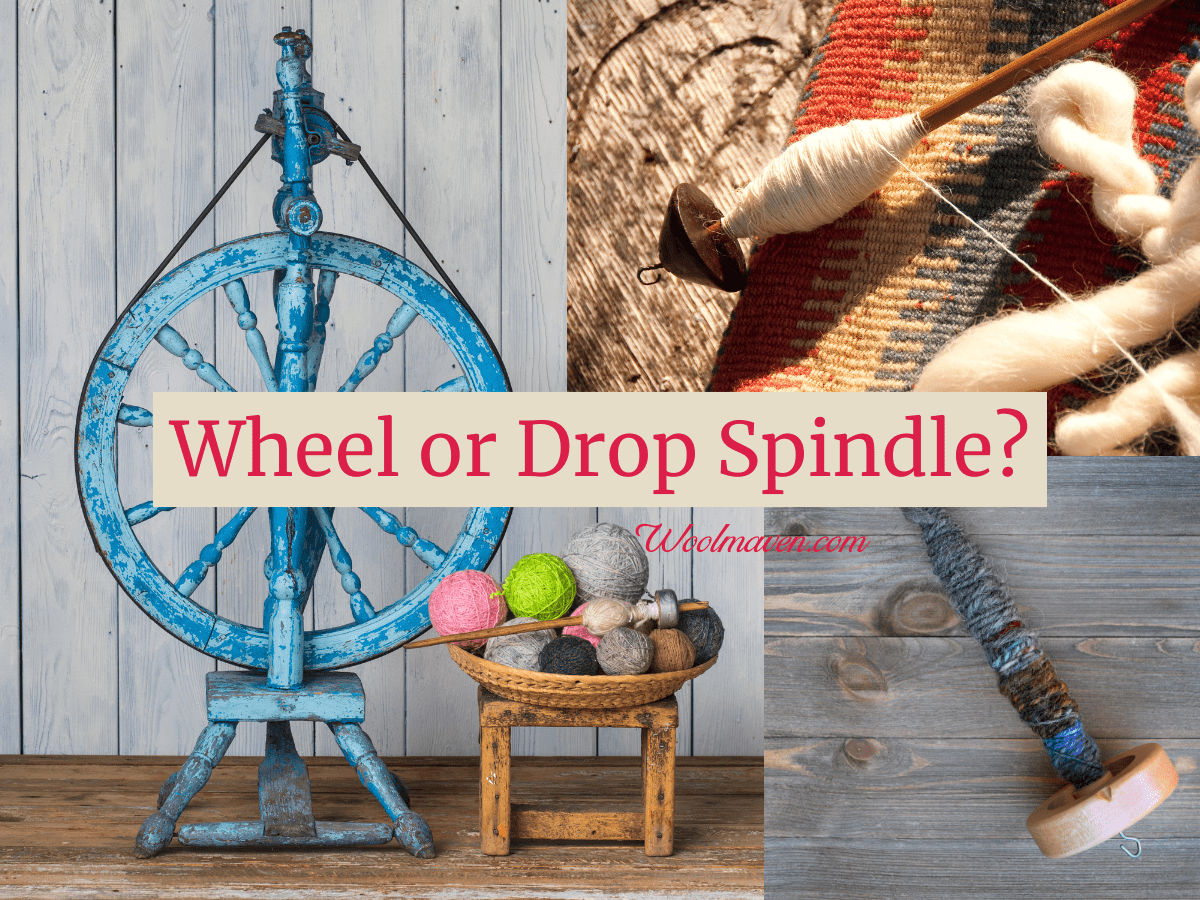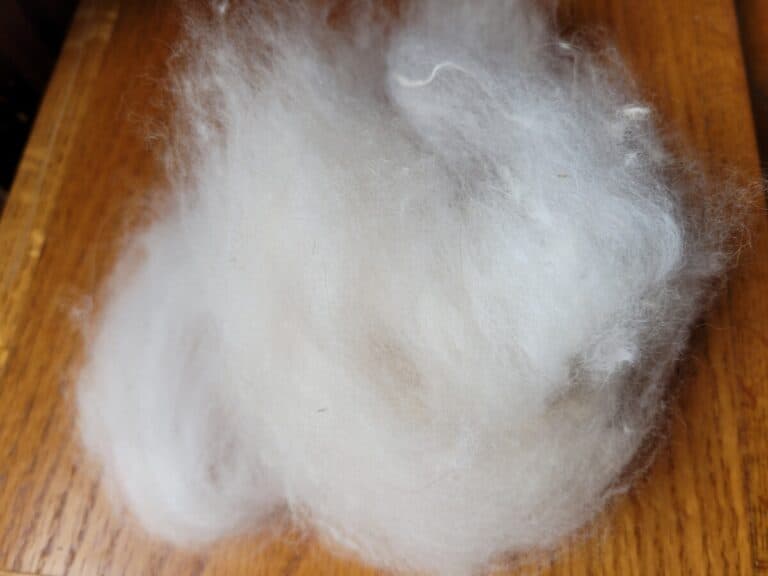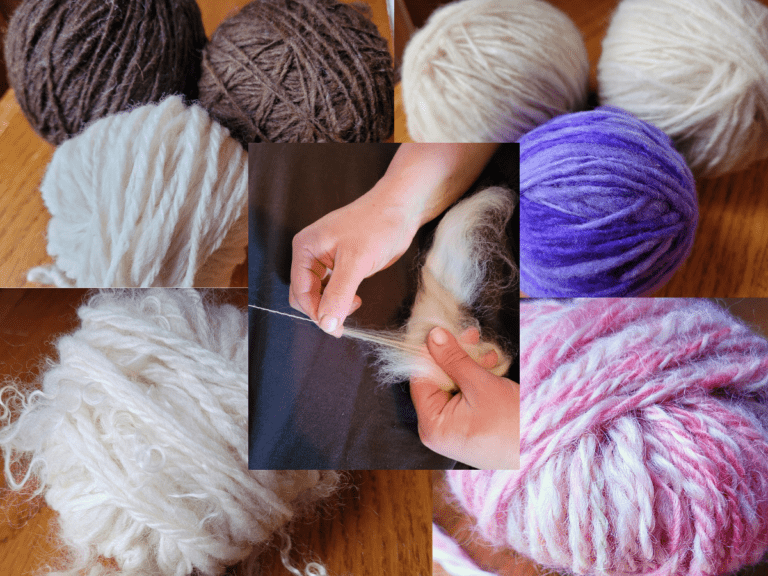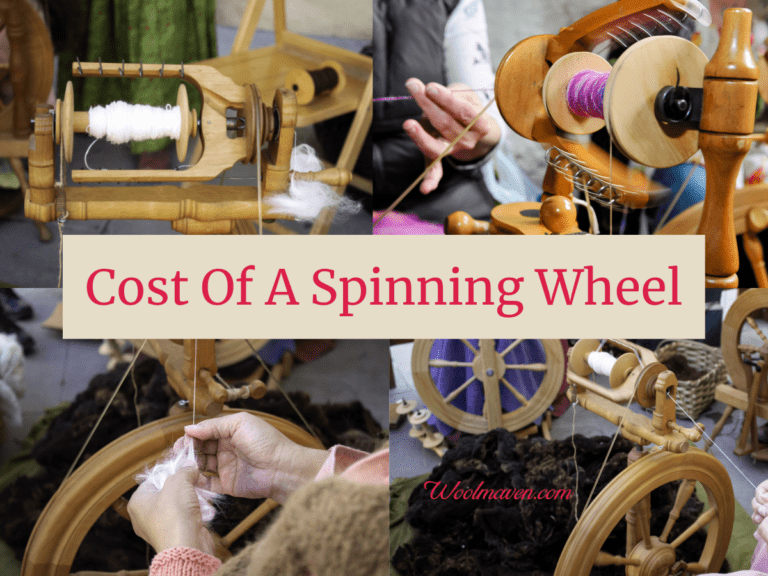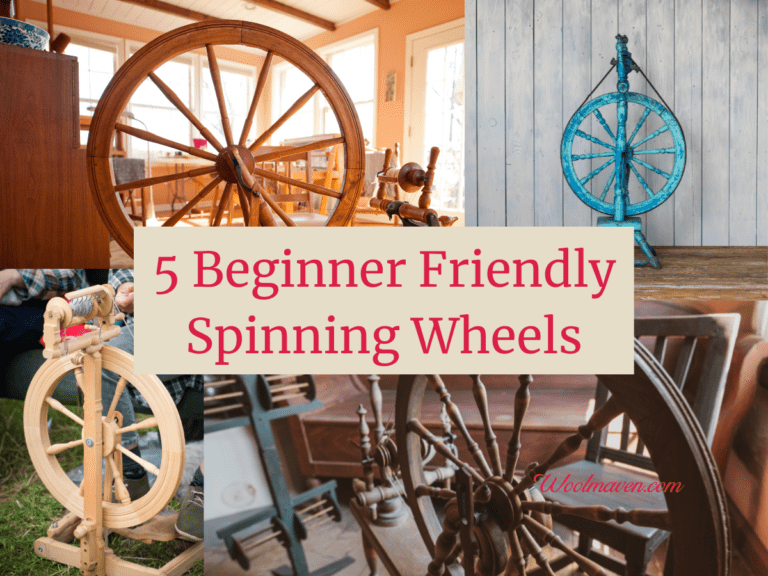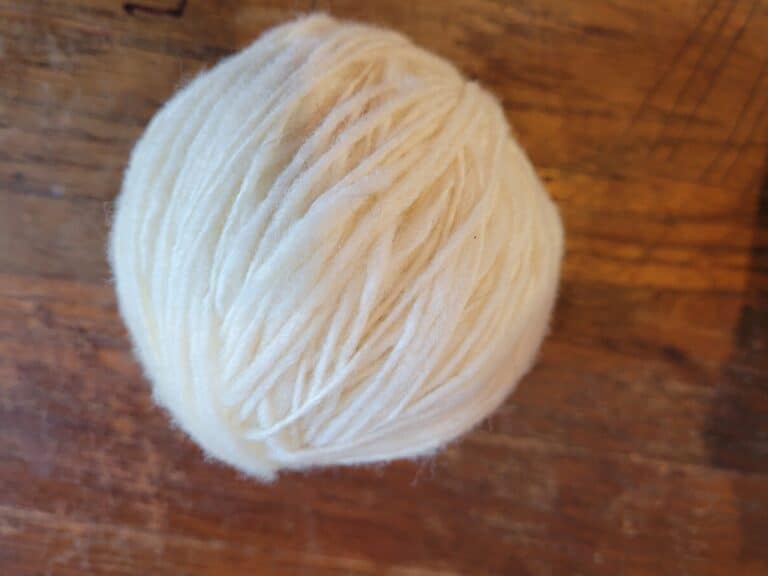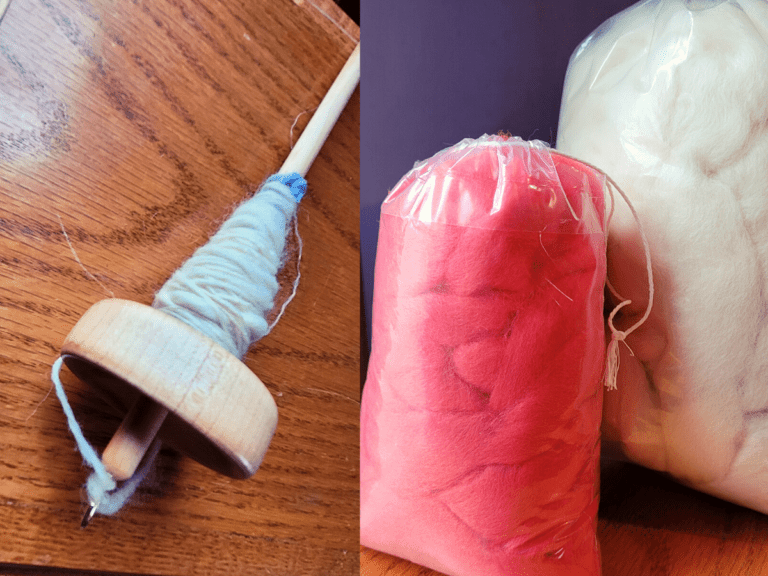Should You Learn To Spin On A Wheel Or A Spindle?
Should you use a spindle or a wheel to learn how to spin yarn? It’s a big question that all new handspinners face! How do you know which one is the best for you to start with?
To start spinning for the least money, use a spindle. The easiest way to start spinning with a wheel is to use pencil roving, at first, then work your way up to other easy to use fibers.
Can You Spin Wool Without A Spinning Wheel? goes into a few more options for spinning wool and gives you some ideas on using alternatives, like unspun yarn.
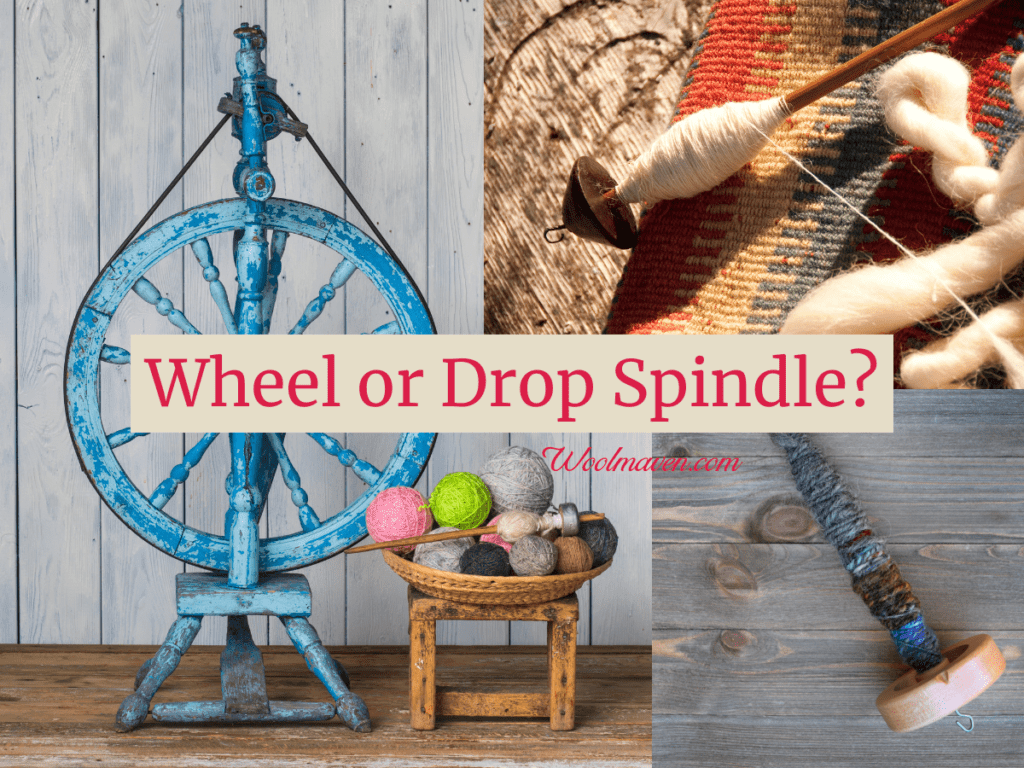
This post contains affiliate links, which means I receive commissions if you choose to purchase through links I provide (at no extra cost to you).
It is cheaper to start with a spindle
The easiest way to start figuring out which one, the wheel or spindle, will work best for you, is to start of with money. How much money are you willing to spend to get started?
If you are only willing to spend a small amount of cash on a maybe, as in “maybe I’ll like it, maybe I won’t” start with a spindle.
You can get a new beginner’s style spindle for $10-15 at most fiber supply shops.
I purchased Rosie’s Student Drop Spindle, since it is the most inexpensive spindle to learn with.
To go with that, you’ll need some wool, grab some Corriedale which has more of a grippy fiber, for another $20-25.
Blue Faced Leicester has luster and a bit more slip, making it particularly good to use on a spindle.
If you add some shipping on there, you can get started with a spindle and wool for less than $50.
Drop Spindle Spinning is an article on SpinOffmagazine.com that goes over the high points of using drop spindles and has basic drop spindle instructions.
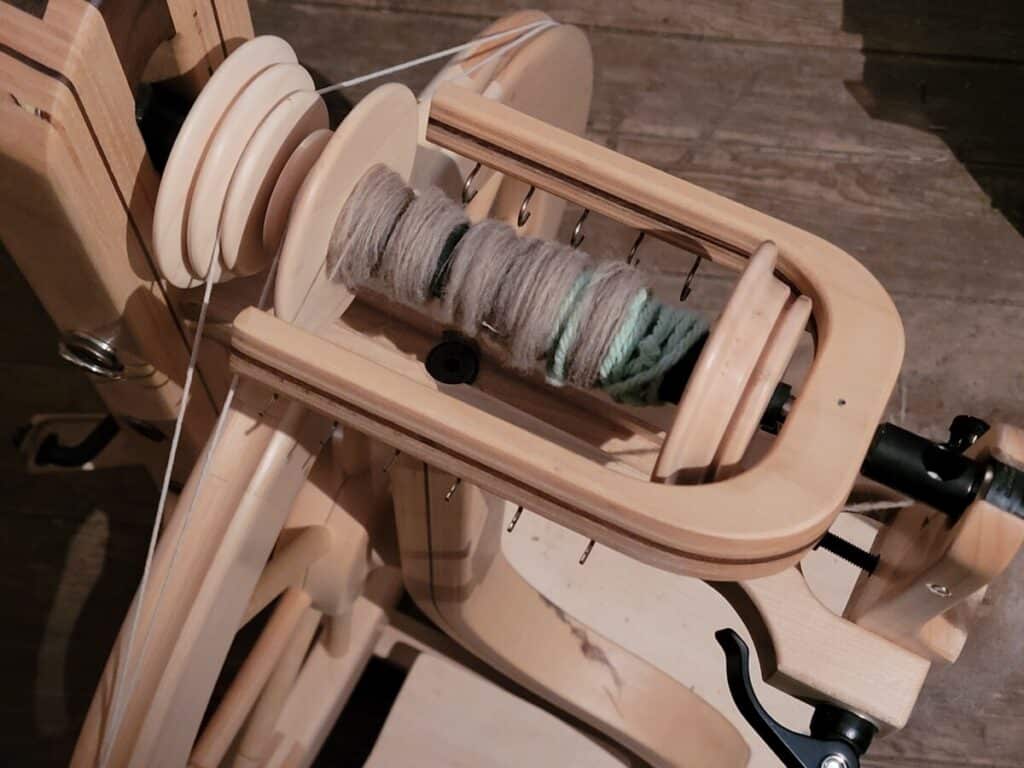
You’ll get more done with a wheel
Personally, I would start learning to spin with a wheel.
5 Beginner Friendly Spinning Wheels gives you a look at my top picks for easy to use wheels that are perfect for folks learning to spin.
To me, spinning on a wheel is so much more interesting. Part of keeping up with something new is liking it enough to stick with it, and to be blunt, I’m not much of a spindle fan.
Additionally, there is the idea of when it costs you more to get something, you tend to value it more.
What I mean here is that spindle you purchased for $15 can be overlooked when you get frustrated, the wheel that cost you $500+ is harder to look past since it cost you more to get.
As much as I like spinning with my wheel, I do not care for the spindle, so much so that I’m not sure that I would have kept trying to learn to spin had I only been working with the spindle!
I’m telling you this because there are times, many times to tell you the truth, that you’ll feel frustrated when learning to spin, I know I did!
If I was working with a spindle, it would not have been as keen to keep going, whereas working with the spinning wheel was attractive enough to me to keep me interested.
What Is A Raw Wool Fleece? (And should you buy one?) goes over sourcing your spinning wool and gives you a series of tips to find fleece that works for you.
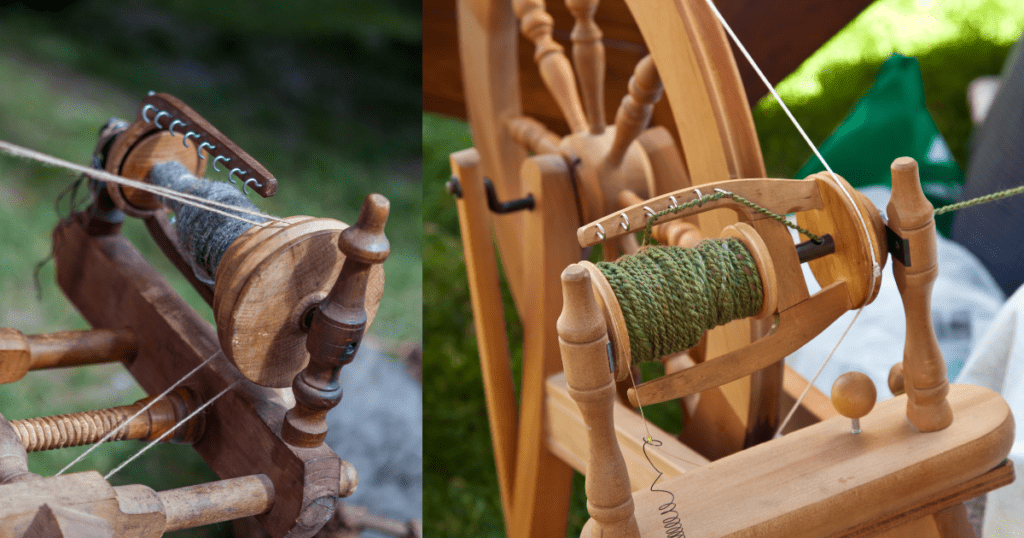
My top choice for getting started with a spinning wheel is the Ashford Traditional, it’s a wonderful wheel that is simple enough to start with and will keep up with you as you grow in skill.
Check out the Ashford Traditional for yourself!
Pros of a wheel
Using a spinning wheel for your yarn has some advantages:
- make more yarn at a time
- more options of yarn to make
- resale value is high
- will last a lifetime
Once you get the hang of spinning with your wheel, you’ll be able to produce yarn so much more quickly than with a spindle.
When you are trying to learn to work the wheel, you’re not concerned about yardage, but when you try to make something out of your yarn, production matters.
You’ll also have more options of yarn to make with your wheel, lock spinning, core spinning, etc., in addition to variety of thicknesses of yarn.
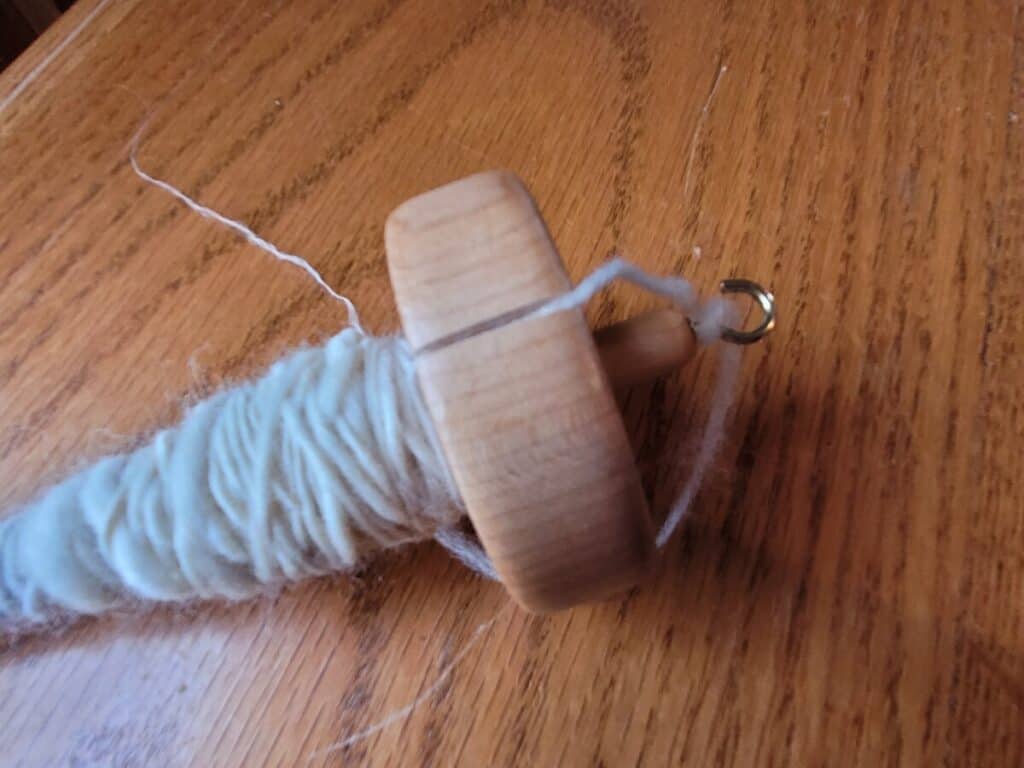
Pros of a spindle
Using a spindle for your yarn making adventures also has some advantages:
- cheap to buy
- portable
- hands only operation
There is no getting around it, a spindle is the least expensive way to start spinning. If you search around you can even find DIY spindles or you can buy one for under $20, mine was $11.
Spindles are also the ultimate in portability. If you want to have the most options on where you do your spinning, a spindle just might be the best choice for you.
Cons of a wheel
While I am biased towards learning on a wheel, I will easily admit that there are downsides to a wheel, especially as a beginner.
Here are the first few spinning wheel negatives that I can think of:
- higher cost to get started
- more to coordinate, both your hands and your feet
- more parts to figure out, set up, tension, etc.
- most wheels lack portability
Cons of a spindle
Of course, there are a few negatives that go with using a spindle, as well, including:
- small amounts of yarn made at a time
- more limited on yarns you can make
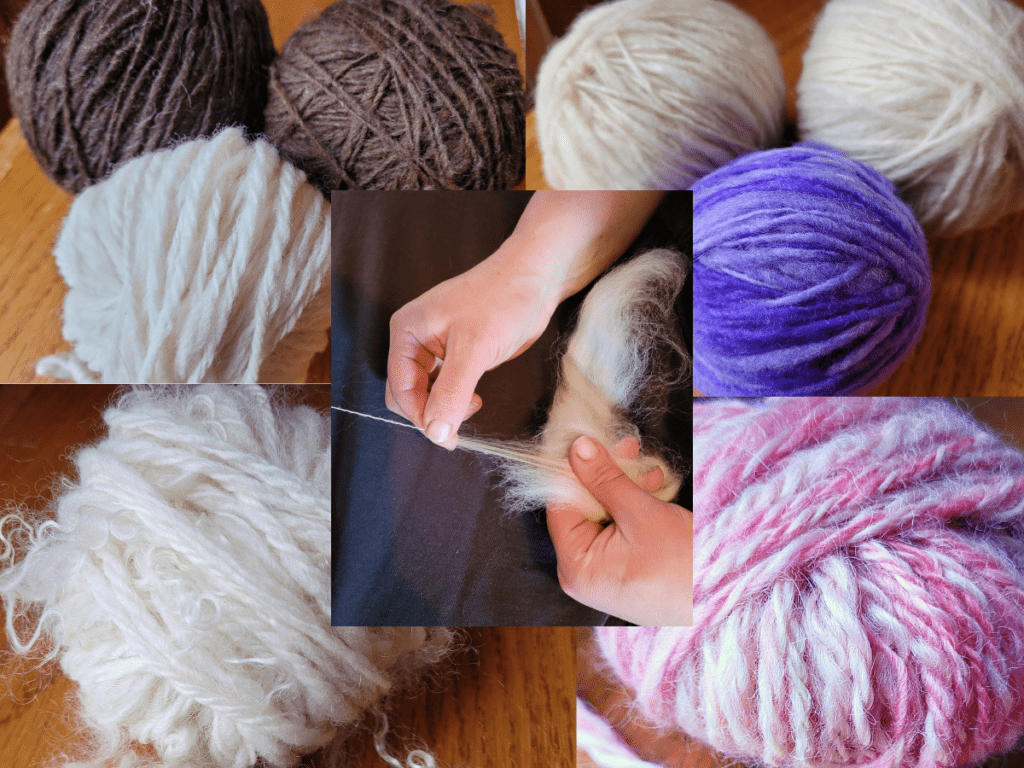
Easy way to start spinning with a wheel
The easiest way to start spinning with a wheel is to use pencil roving as your fiber source. For about $20 you can order some pencil roving that will get you started spinning on step at a time.
Spinning wheels vary quite a bit. Mine is a Louet double treadle and is a very simple wheel to operate. Work with a beginner friendly wheel, if at all possible.
The less bells and whistles you have to worry about at the beginning, the faster you’ll figure out your wheel and be spinning up a storm!
Get a friend or the person who you purchased your wheel from to show you how to set it up and have them initially set the drive and tension for you.
You need to know how to adjust the tension so you can change it as needed when you are spinning.
A word to the wise, go slowly when adjusting tension, small changes make a big difference in how your wheel works.
When I was a beginner, I would twist the tension down a lot at a time and then mess myself up in the other direction, from too loose to way too tight. Make slight adjustments!
Practice just treadling
Now, practice treadling, no kidding. Just treadling. Go slow, go fast, stop the wheel, restart and change direction. Mostly practice slowly and steadily treadling.
Once you are comfortable with this, it’s time to move on to using the pencil roving!
Grab your pencil roving
Attach the pencil roving to the leader on your bobbin. Be sure the leader is put through the orifice and hooks so that the yarn will go onto the bobbin in the correct path.
Attaching could be as simple as pulling the end of the pencil roving through the loop on the leader and keeping it doubled over until the twist holds it in place.
Now, place your hands on the roving 6 inches or so apart and slowly start the wheel in a clockwise direction.
You are going to be lightly pinching the roving with your hand closest to the wheel orifice so that it gets some twist before it goes up onto the bobbin. That’s it, you are spinning!
Once you have the feel for it, try to even out the twist of the yarn.
Are little twists sticking out of your yarn?
If you have little twists sticking out all over the yarn, you are overspinning. Try to slow your treadling and let the roving go onto the bobbin more quickly.
It seems to be almost some weird automatic reaction that when things start to go wobbly, the beginner me would want to treadle faster!
That’s almost funny because going faster is rarely the answer, it’s much more likely that I need to slow down. Now that I have been spinning for a while, I’ve figured that out!
Another thing to consider with overspinning is you could loosen up your tension slightly, just slightly. Remember to make little adjustments!
Is your roving breaking?
If your roving is too loose so it is breaking from pulling apart rather than twisting and holding together, you are under spinning the roving.
Try keeping the roving pinched in your fingers a bit longer before you let it slide up onto the bobbin.
You can also treadle faster, but since this is rarely the problem!
The more likely fix is adding more twist by building up more twist in the roving before it goes onto the bobbin as a first step to getting your yarn to hold together.
If you are looking for a super easy to work with, longer staple length wool, consider Romney Top. It’s long enough for you to draft without adding too much twist, yet not slip out of your fingers!

